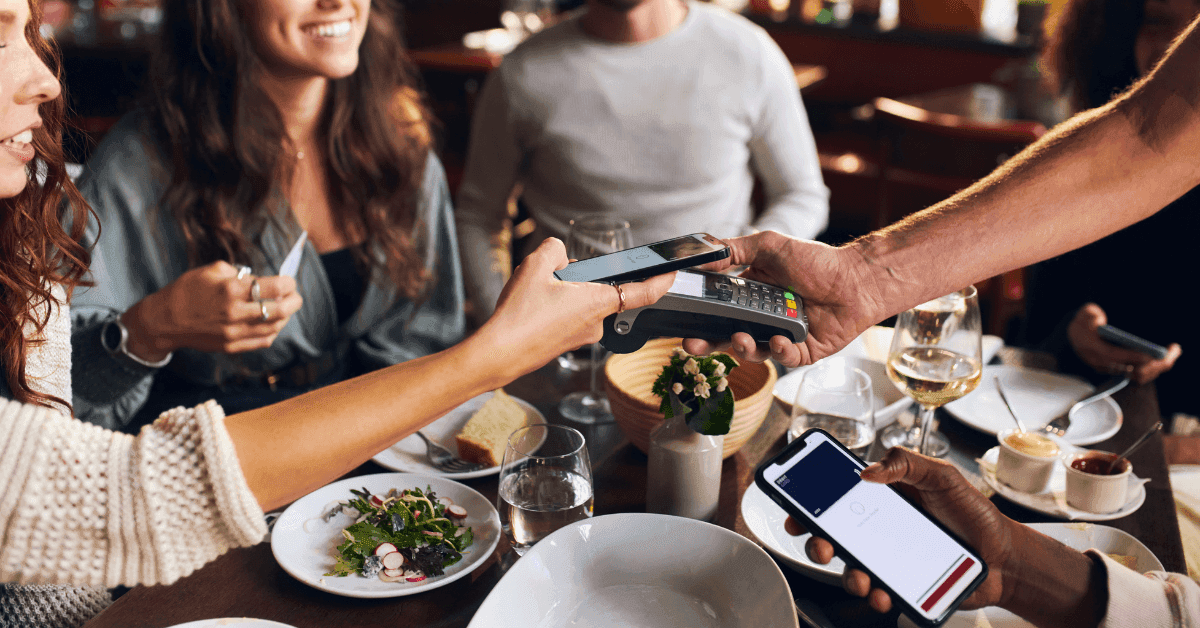Think about the last time you signed up for a restaurant loyalty program. Chances are, you got points, maybe a free drink after ten visits, and then… forgot all about it.
You’re not alone. After reviewing 150+ restaurant loyalty programs across the globe, we saw the same patterns again and again: programs that start with a spark but quickly lose steam.
The good news? Some restaurants are breaking the cycle, and there’s a lot to learn from them.
In this blog, we’ll share what 150+ programs taught us. The mistakes to avoid, the strategies that actually work, and how restaurants can design loyalty programs that customers truly love!
So tuck in your napkin, it’s about to get saucy!
4 Main Issues Most Restaurant Loyalty Programs Get Wrong
When we pulled apart 150+ restaurant loyalty programs, the same four cracks kept showing.
- First, complexity.
Roughly two-thirds of the programs we reviewed bury guests under multi-tier rules or fuzzy point math, precisely the kind of design that tanks participation because people can’t tell what they’ll get or when.
Industry guidance points in the opposite direction: the National Restaurant Association highlights “keep it simple” as a hallmark of winning programs. It showcases brands that make earning and redeeming utterly frictionless in the app.
For example, when Starbucks increased the number of Stars required for widespread redemptions, the change (and perceived devaluation) sparked a wave of backlash, proving that tinkering with value clarity can erode trust quickly.
- Second, most programs still struggle to create emotional lift.
Points alone rarely make people feel seen; personalisation does.
The 2024 loyalty survey from Deloitte shows consumers reward brands that use data to deliver relevant, anticipatory experiences (not just discounts), which is why loyalty needs to feel tailored, timely, and human.
The NRA reaches a similar conclusion, urging operators to deploy AI-driven offers and exclusive moments that make members feel like insiders.

- Third, the digital experience is often clunky.
Too many programs still rely on plastic cards, coupon codes, or fragmented touchpoints, even as guests expect mobile-first convenience at the register, curb, and couch.
The NRA explicitly calls out robust, app-based earn/track/redeem as table stakes now, and spotlights brands that integrate loyalty tightly with ordering and POS for real-time rewards.
Look at the growth curve when the UX is right: Chipotle’s streamlined, app-centred program accelerated past 40 million members by 2024, riding simple value, frequent moments of recognition, and easy participation.
- Finally, a transaction-only mindset leaves loyalty underpowered.
Programs that reward only receipts overlook signals that foster advocacy, ratings, reviews, referrals, new-item trials, sustainable choices, or visit streaks.
The smartest operators are broadening what “counts,” then using those behaviours to trigger meaningful, personalised benefits.
The lesson to take is learning to move beyond blanket coupons to relationship-building exchanges that compound over time.
Taken together, the pattern is clear: simplify the value story, design for emotion (not just economics), make mobile the primary doorway, and reward the full spectrum of engagement. The brands doing this best are the ones turning “a program” into a growth engine.
What the Best Restaurant Loyalty Programs Are Getting Right?
The most effective restaurant loyalty programs don’t settle for digital punch cards or generic discounts. They create experiences that feel like extensions of the dining table itself.
Global brands show that loyalty works best when it blends into daily rituals, delivers emotional value, and rewards meaningful engagement. Gamification, community-driven perks, and occasion-based passes are just a few strategies that turn casual customers into repeat advocates.
- For example, according to a 2024 Deloitte report, brands that integrate gamified elements, like points multipliers, reward spins, or milestone challenges, see up to 30% higher engagement rates.
- Another study highlights that programs that tie rewards to experiences or lifestyle behaviours (not just transactions) can drive 20% more repeat visits.
The global companies that take these stats to heart win. Their loyalty programs succeed because they’re rooted in the dining culture itself: rituals, rewards, and shared moments that feel as natural as breaking bread at the table.
What sets these programs apart isn’t just digital polish or emotional appeal; it’s their ability to borrow from the rhythms of restaurant life itself.
- They tap into rituals (daily spins, dining passes),
- Create micro-communities inside the restaurant brand,
- and even turn meals into collectables or brag-worthy experiences.
These aren’t features you can copy-paste from a retail or QSR program; they’re tailored to how people actually dine. That’s the secret sauce: they make loyalty feel less like marketing and more like culture.
Numbers That Matter: Impact of Restaurant Loyalty Programs
Effective restaurant loyalty programs aren’t wishful thinking; they deliver measurable lifts where it matters: visit frequency, average spend, and retention.
Loyalty members make 22% more visits per year than non-members, and visit the brands they're enrolled in twice as often as the average non-member visitation rate. Loyalty traffic has doubled since 2019, even as overall restaurant visits fell last year.
Members spend more during each visit. Specifically, loyalty program members typically spend 20% more per check than non-members. Restaurants with loyalty programs experience 12–18% annual incremental revenue growth compared to those without, demonstrating the cumulative impact of repeat engagement.
On top of that, an overwhelming 84% of customers report that loyalty programs encourage them to visit more frequently, and one in three say the program motivates them to visit at least two extra times per month.
These gains (20% more visits, 20% higher spend, and double traffic share) are far from hypothetical.
They're real lifts that compound, boosting monthly covers, driving up check averages, and building reliable demand.
5 Tactical Restaurant Loyalty Moves that Answer the Numbers Above
1) Simplify the moment of use.
Make joining and redeeming to a restaurant loyalty program as frictionless as paying for the meal. If sign-up takes longer than handing a card over at the table, you’ve already lost the moment.
Keep mobile check-in, wallet passes, or single-tap loyalty options front and centre.
2) Reward behaviour, not just transactions.
We say it over and over again; however, most restaurant loyalty programs still don’t get it.
Don’t treat loyalty as a points factory. Give value for proper behaviours, bringing a friend, trying a new dish, completing a quick feedback survey, or posting a photo.
These actions drive discovery and social proof, turning members into advocates.
3) Tie perks to dining rituals.
Deliver rewards that map to real guest habits: early-dinner discounts for families, quick-service lanes for office lunchers, or a free side when someone orders a specific seasonal dish. Ritualized rewards create repeatable triggers that become part of the guest’s routine.
4) Personalise without overstepping.
Use simple, privacy-respecting signals to make offers feel smart: last-visited dishes, favourite flavours, or family size.
Personalised nudges beat blanket discounts every time, they feel like someone is paying attention, not a spray of promos.
5) Measure impact at the moment, not later.
Track the right metrics: repeat rate for members, incremental spend per visit, and the lift in visits after a campaign. Run small experiments, measure uplift, then scale what works. If a promo doesn’t move these core KPIs, it’s noise.
Restaurant technology is rising, supporting loyalty initiatvies with that tech is more important ever. A simple face-to-face feedback can go a long mile, however it can put pressure on the stuff. Using QR codes to get third-party data from your customer is what works.
Who knows…Maybe that little QR code is just the first chapter of your restaurant’s tech journey, leading all the way to seamless pay-at-the-table experiences!
The Practical Payoff
When restaurants stop treating loyalty as an accounting ledger and design it as a living behaviour system, the results are threefold: more guests walk in more often, they spend more when seated, and they come back instead of drifting away. That combination increases cover efficiency, reduces acquisition cost, and builds a durable revenue stream you can forecast.
If you want the hard numbers and case examples that prove this in restaurants like yours, we’ll pull the latest industry studies and brand case files.
For now, if you’re ready to stop guessing and start designing loyalty that pays, here’s a simple next step: take one signature moment in your dining experience (the table booking, the second drink, or the check) and make a loyalty tie that’s immediate, meaningful, and repeatable.
Grab your napkin, this is where the sauce stops spilling and the repeat customers start lining up.
Interested in restaurant loyalty programs and ready to start your journey? Contact Kaizen Technology’s team of experts today!



